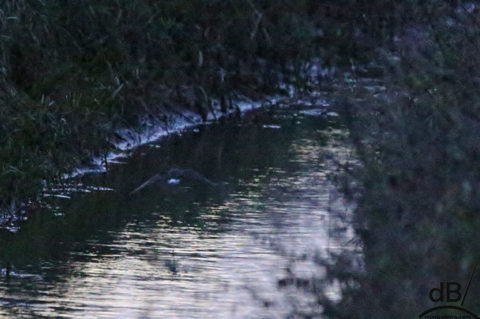In mid-October I spotted a bird I didn’t recognise scooting along Cottenham Lode. It looked mostly black/very dark-brown but with a white rump and a square tail. It was a quick flyer shooting along the fen drain close to the water’s surface. I’d say it was just a little smaller than a swift and with a similarly sickle-shaped wing profile; but the swifts were long gone by this time of the year. I thought maybe it was a seabird, but that felt unusual we’re just outside Cambridge miles from the coast. Perhaps it was a migrant blown off course by the strong winds we called “ex-Ophelia” at the time. I didn’t get a photo.
Members of the RSPB forum had various suggestions, but it was my trusty ornithological mentor on Facebook, Brian Stone, who recognised it from the description and told me it was most likely a green sandpiper. I saw the same bird again a few nights ago, it was almost dark, but it was definitely the same species. I got a very noisy snap as it passed over a patch of light on the Lode.

I sent the picture to Brian who confirmed it, even from this awful photo, as a green sandpiper (Tringa ochropus). He pointed out that it’s a common visitor to the fen drains in winter, and on passage). The green sandpiper is a wader (a shorebird). It breeds across subarctic Europe and Asia and is a migratory bird, wintering in southern Europe, the Indian Subcontinent, Southeast Asia, and tropical Africa. It eats small invertebrates plucked from the shoreline mud. Almost uniquely for a wader it nests in trees although will often adopt a used thrush’s nest as its home.
According to the RSPB its call is a loud “tllu-eet weet-weet!”